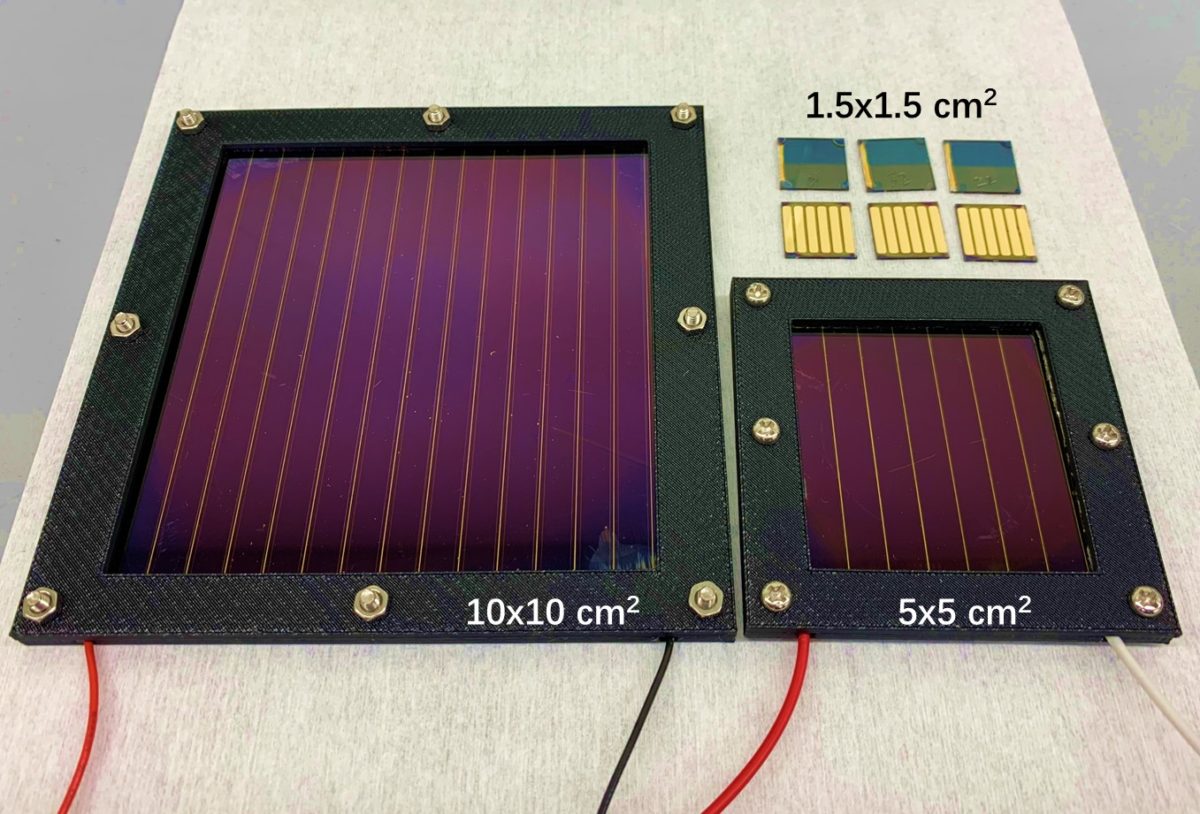From pv magazine International
A group of scientists at the Okinawa Institute of Science and Technology (OIST) in Japan has created a high-quality version of one of the most promising halide perovskites – the α-formamidinium lead iodide known as α-FAPbI3 — for applications in absorber layers of solar cells.
The researchers explained that this perovskite material is fabricated by combining lead(II) iodide (PbI2) and formamidinium iodide (FAI) and that the reaction between them produces FAPbI3. “But this method is far from perfect,” they also specified. “There are often leftovers of one or both of the original materials, which can impede the efficiency of the solar cell.”
The Japanese group applied what it describes as a more precise powder engineering method consisting of adding formamidinium acetate (FAAc) and hydroiodic acid (HI) to PbI2, heating the mixture to 90 degrees Celsius, and then dissolving and filtering out impurities or unreacted materials. “When the perovskite’s absorber layer was formed from the original reaction, it was stable at high temperatures,” it further explained. “However, at room temperature, it turned from brown to yellow, which wasn’t ideal for absorbing light. The synthesized version was brown even at room temperature.”
This perovskite powder was used to build a small-area solar cell with a power conversion efficiency of over 23.5% and a lifespan of more than 2,000 hours. With this cell, the academics were also able to build a 5 x 5 cm2 small-sized module with an efficiency of around 14%. “Our next step is to make a solar module that is 15 x 15 cm2 and has an efficiency of more than 15%,” said research co-author Guoqing Tong. “One day I hope we can power a building at OIST with our solar modules.”
The technique to fabricate the special perovskite powder is presented in the study “Removal of residual compositions by powder engineering for high efficiency formamidinium-based perovskite solar cells with operation lifetime over 2000 h,” published in Nano Energy.
This content is protected by copyright and may not be reused. If you want to cooperate with us and would like to reuse some of our content, please contact: editors@pv-magazine.com.









By submitting this form you agree to pv magazine using your data for the purposes of publishing your comment.
Your personal data will only be disclosed or otherwise transmitted to third parties for the purposes of spam filtering or if this is necessary for technical maintenance of the website. Any other transfer to third parties will not take place unless this is justified on the basis of applicable data protection regulations or if pv magazine is legally obliged to do so.
You may revoke this consent at any time with effect for the future, in which case your personal data will be deleted immediately. Otherwise, your data will be deleted if pv magazine has processed your request or the purpose of data storage is fulfilled.
Further information on data privacy can be found in our Data Protection Policy.